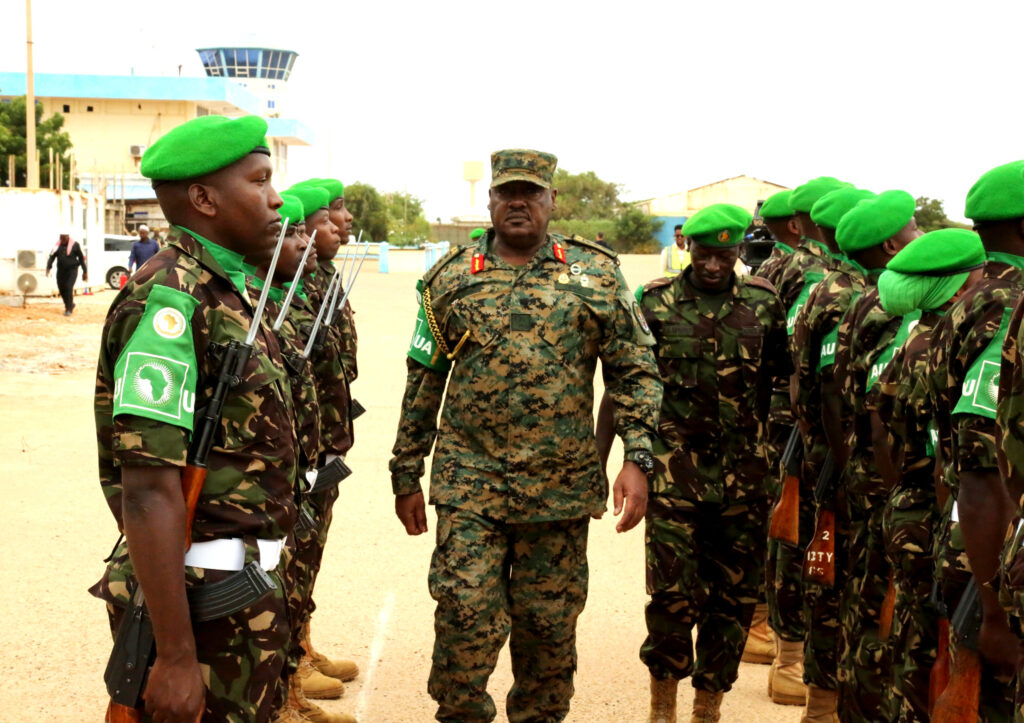ADF STAFF
Details are emerging about the new peacekeeping mission that will succeed the African Union’s current multilateral force in Somalia known as ATMIS when it concludes operations at the end of this year.
On August 1, the AU adopted a strategic concept of operations for its Support and Stabilization Mission in Somalia (AUSSOM) and forwarded it to the United Nations Security Council, which gave approval on August 12.
“The follow-on mission will have up to 11,911 personnel, including 85 civilians and 680 police personnel, deployed across four geographical sectors,” according to independent news website Security Council Report. “The mission will deploy starting on January 1, 2025, and gradually hand over security responsibilities to the Somali security forces and withdraw its personnel by the end of 2028.”
The new mission’s security goals represent a continuation of the ATMIS mandate. AUSSOM will prioritize counterterrorism operations against the al-Shabaab terror group, capacity building of Somali security forces, and promoting political dialogue and reconciliation.
The mission aims to focus on peace-building measures, leaving the Somali government to work on state building with its international partners.
Egypt and Djibouti have committed troops to AUSSOM, with Egypt’s forces potentially set to replace 3,000 Ethiopian troops stationed in Somalia with ATMIS.
Somalia has threatened to expel the Ethiopian Soldiers because of its diplomatic row over Ethiopia’s Red Sea access plan that would give international recognition to the breakaway Somaliland region.
“If Ethiopia does not withdraw from its [Memorandum of Understanding] agreement with Somaliland, its forces will not be part of the upcoming operation,” Somalia Prime Minister Hamza Abdi Barre said during an August 22 town hall meeting in Mogadishu. “If they remain, it will not be under the African Union mandate.”
Concerns also remain that the ongoing drawdown of ATMIS troops could open gaps in the long-term sustainability of Somali Armed Forces (SAF). In a recent report, Mogadishu-based Balqiis Insights warned that financial and logistical challenges continue to undermine the AU’s efforts to improve the SAF’s capacity.
“Success will hinge on bridging the gap between Somalia’s ambition for self-reliance and the practical realities of ongoing security challenges,” the report read.
Al-Shabaab, which is affiliated with al-Qaida, and the Islamic State group’s affiliate in north Somalia represent threats to the country and the Horn of Africa. Both groups are well financed and control large swathes of territory.
“Al-Shabaab, in particular, retains significant control over rural territories and continues to launch deadly attacks in urban centers,” the report said.
Critics such as Somali commentator Suleiman Walhad believe the AU to have largely failed Somalia and prefer a more direct approach with international funding for Somalia to provide its own security.
“It is not true that Somalia needs foreign forces to assure itself of peace and stability,” he wrote in an August 9 opinion piece for the Eurasia Review news website. “It needs a national reconciliation process and have its clans make peace with each other the Somali way.”
On the other end of the spectrum, Fauziya Ali, founder and president of advocacy organization Women in International Security Horn of Africa, believes the AU’s approach is evolving in a positive way.
“This new mission promises a more integrated and holistic approach to peacekeeping and stabilization in Somalia,” she wrote in an August 27 article for regional website DiploBrief. “It is aimed at building on the gains made by AMISOM and ATMIS, while addressing the shortcomings identified during the just concluded transition phase.
“Somali stakeholders should actively participate in shaping the mission’s strategy, ensuring that it aligns with national priorities and fosters long-term stability to the troubled nation.”

